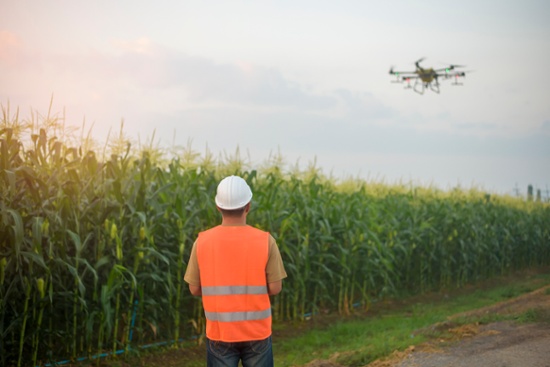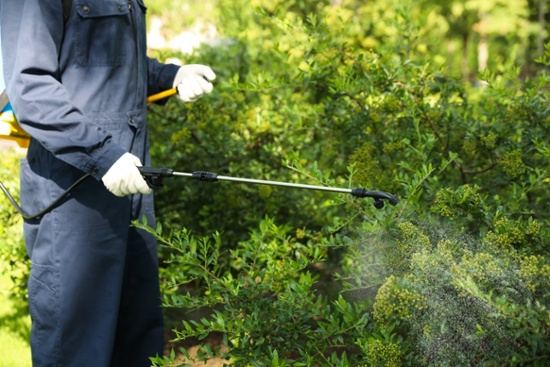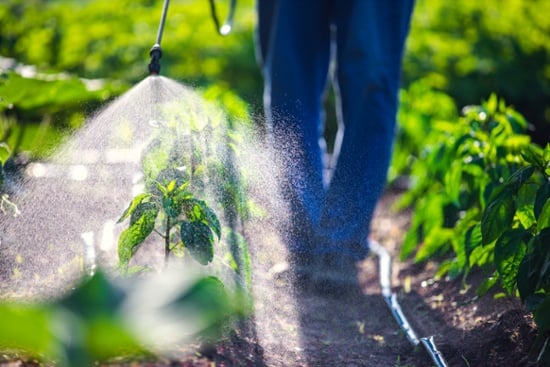In August 2022, NCFH’s Jacquie Cotton publicly acknowledged Australia’s significant reliance on pesticides and expressed concern at how little we understand about its impact on public health. Additionally, WorkSafe began funding the Agricultural Chemical Use Mapping project which will investigate the distribution of pesticides further, as well as the safety of PPE and any perceived illnesses whilst using the chemicals.

Drones that are capable of spraying pesticides may be utilised for agricultural applications.
Since the 1990 review on agricultural and veterinary chemicals, pesticides have been subject to vast amounts of scrutiny in Australia. While these chemicals continue to offer a net profit for farmers worldwide and offer a venerable benefit to the abundance of food, much is speculated upon health implications and hazards involved when storing and applying these heavily toxic chemicals. Ecologists have also chimed into the conversation, with concerns about the environmental impacts of pesticide use in public and industrial contexts.
An Unbreakable Habit
Australia is heavily invested in pesticides, continuing to use several pesticides that are banned elsewhere. As of 2022, there are over 8000 pesticides on the Australian market, divided between commercial farming use (75%) and domestic or urban use (25%). In the case of commercial agriculture as observed in 1990, the value of Australia’s produce skyrocketed by 250% between 1950 and the following 40 years.

Pesticide use in domestic and urban settings accounts for a quarter of all pesticide use in Australia.
With the help of various pesticides, such as insecticides, herbicides and fungicides, Australia’s farming industry has seen a 67% increase in value in the past 30 years. Some have proposed a lenience on pesticides due to this highly profitable industry, while others maintain that differences in regulation are necessary dependent on the country or region in question and reassure that the health implications in humans are negligible, although not in the case of collateral damage to native wildlife.
Environmental Concerns
Much controversy has arisen from the use of pesticides and the many species of Australian wildlife caught in the crossfire. Either through direct contact or consuming poisoned prey, pesticides both domestic and commercial are a substantial threat to the Australian ecosystem.
Much of the impact has simply been overlooked by humans, but the pesticides ruled “safe” for human exposure have proven to be fatal to bee populations in the smallest amounts. Bees are crucial for the pollination of crops, meaning that our quality of produce and nutrition would plummet in their absence. Many farmers could be obliviously killing off their best workers.
Secondary poisoning is also an issue in the case of Australia’s avian wildlife. Rodenticides rank among Australia’s most used and toxic pesticides. Australia’s rodents are an essential part of our food chain, and nourish iconic wildlife, such as Kookaburras, Southern Boobook owls and various raptors. In addition, non-targeted land animals such as possums and wombats may also consume poisoned rodents and slug bait.

While productivity has increased due to the use of pesticides, there are environmental concerns.
Recent developments in pest management show promise in avoiding this tragic loss in wildlife by swapping synthetic pesticides with natural biopesticides, which have a narrowed environmental impact. Farmers are also opting for spot spraying and introducing robotics into their crop management, decreasing the likelihood of accidental fatalities.
Incidents such as the 40 tonne spill of chemical herbicide in Melbourne last year highlight the potentially horrific impacts of pesticide spills. Uncontrolled leaks and spills can be catastrophic for both humans and native wildlife through exposure to toxic liquids and vapours.
The Impact on Humans
Although pesticides are said to have minimal effect on human beings in the form of residues on food, those who have prolonged exposure working in agricultural sectors may be at risk of carcinogenic effects as well as disruption of the endocrine system, leading to damage to reproductive organs. Therefore, the OHS dictates that PPE equipment and respirators are worn in areas where pesticides are airborne and that the chemicals must be correctly labeled. In addition, a record is kept of all use of pesticides detailing when, where and which pesticide was used and the species it targeted.
To learn more about pesticide safety solutions for your workplace, click here.

Jack Woodford is Storemasta’s graphic designer and occasional blog contributor. When he isn’t giving the company’s brand assets a makeover, he is typically found drawing and repairing analog synthesisers.